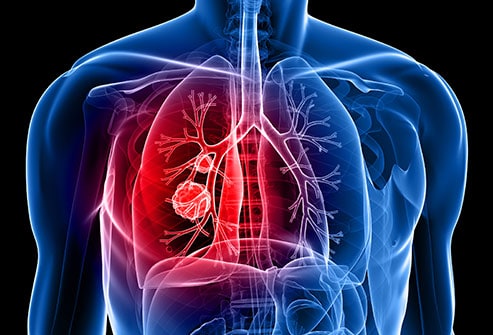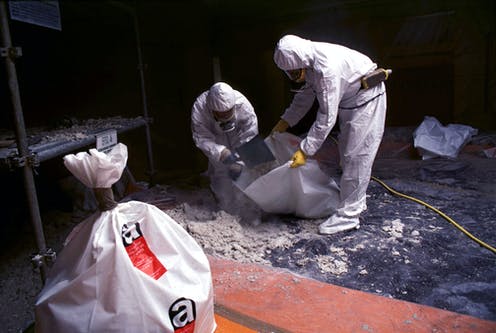Asbestos is an extremely dangerous mineral that causes a variety of lung disease and other health complication that is related to asbestos exposure. Asbestos can be found in different areas – be it your home, school, and other establishments. Awareness of the presence of asbestos is important to prevent developing diseases related to it. The asbestos-related disease takes years to develop and, in some cases, it can lead to death. Although the use of asbestos has been prohibited, occupations under the mining and construction industry are greatly affected by asbestos-related disease.

Two former asbestos manufacturing factories were in Brisbane suburbs of Gaythorne and Newstead in Queensland. Way back in November 2014, the local media in Brisbane exposed that there had been a Wunderlich asbestos factory in the suburbs of Brisbane, Gaythorne. Another company has been discovered that year which is the James Hardie asbestos factory at Newstead. In year 1980s, both companies have halted the manufacturing of asbestos products.
During the year 1945 to 1980, Australia has commercially used asbestos in construction industries and other sectors resulting in an increasing number of deaths in Australia. In the year 2008, Australia recorded 628 deaths attributed to mesothelioma and 109 to asbestosis. These are proven data that asbestos exposure is extremely fatal and it takes years to develop an asbestos-related disease.
Symptoms of Asbestos-Related Disease
After being exposed to asbestos symptoms may not be visible after many years. From the initial day of asbestos exposure, it may take up to 10 to 40 years to develop the asbestos-related disease. If you have worked in industries that involve the use of asbestos and you experience the symptoms listed below, contact immediately your healthcare provider.
- Wheezing, shortness of breath
- Development of continuous cough that worsens over time
- Paint in the chest
- Blood in the fluid (sputum) coughed of from the lungs
- Difficulty in swallowing
- Loss of appetite that causes weight loss
- Swelling of the neck or face
- Fatigue or anemia.
To diagnose asbestos-related disease there are tests that your healthcare provider will require you to do and will also question you about your symptoms. Physical exams will be performed including lung function tests, chest x-ray to check if there are changes in the lungs from asbestos exposure, and lab tests to count the quantity of asbestos material in your body. Your healthcare provider may also recommend that you do further testing to check the details of your lungs. You will be recommended to take a CT scan, bronchoscopy, and lung biopsy. These tests are necessary to get a more detailed image of your lungs and take sample tissue to determine if there are signs of disease.
Asbestos-related Diseases
Two major types of disease are associated with being exposed to asbestos. The first is the Malignant or Cancerous Disease wherein the abnormal cells get out of control and split up and can attack nearby tissues. This type of disease can be controlled temporarily but it is very hostile and life-threatening. The second is Nonmalignant or Non-Cancerous Disease. This disease is the growth of abnormal cells but it does not invade other parts of the body and can be cured with treatment, however, some diseases are incurable and can be life-threatening.
Malignant Asbestos-related Diseases (Cancerous)

- Lung Cancer is the usual and most fatal asbestos disease and the tumors appear in the internal pleural tissue. Although the use of tobacco and exposure to other carcinogens are the main drivers of lung cancer, approximately 20{67b0c6359b2ea1a8f282a2282e330ec660e93c30204e0648b343660c47856098} of all cases are related to asbestos exposure.
- Laryngeal Cancer is mostly caused by smoking and excessive alcohol intake, although the cases are very rare it is often related to asbestos exposure. When asbestos fibres spread through the air, inhaling it may be trapped in the larynx or voice box. It can be treated by undergoing surgery accompanied by radiation and chemotherapy
- Ovarian Cancer is a deadly disease that affects women’s reproductive systems and asbestos exposure is one of the prime sources of this cancer. Asbestos fibres can spread to the organs through the lymph system, bloodstream, and reproductive tract.
- Mesothelioma is commonly known as pleural, peritoneal, pericardial, and testicular mesothelioma. This cancer is very fatal and affects various parts of the body by spreading through the lymph nodes.
Nonmalignant Asbestos-related Disease (Non-Cancerous)

Atelectasis is a condition caused by wheezing, coughing, and having difficulties in breathing. The term atelectasis is a medical term for the restricted or complete collapse of the entire lung area. It is rarely related to asbestos exposure. However, in some cases, it is an asbestos-related disease and can be called Blesovsky syndrome or asbestos pseudotumor.
Peritoneal or Pericardial Effusion is a condition wherein there is massive fluid buildup between the layers of the membrane that surrounds the lining of the abdomen or heart. If there is too much fluid buildup it can cause pressure to the heart that can prevent it from pumping normally.
Pleural Thickening is caused by asbestos exposure which develops from having lesions on the pleural lining. This disease lessens the function of the lungs and rarely when it worsens it blocks sufficient airflow to the lungs that can lead to death.
Pleural Effusion is characterised by excessive accumulation of fluid in the lungs. The symptoms are shortness of breath, dry cough, and severe chest pain. Effusion occurs in between the layers of the pleural membrane and sometimes a symptom of late-stage mesothelioma or non-mesothelioma cancers. It can be managed by draining the fluid and performing pleurodesis, but even after draining the fluid and performing pleurodesis fluids will likely accumulate.
Asbestosis is a non-cancerous chronic lung disease that is acutely serious and life-threatening caused by exposure to asbestos fibres. Asbestosis is the scarring and inflammation of the lungs and it intercepts the lungs from relaxing and expanding normally that causes the symptoms of painful chest and difficulty of breathing. Although this disease is not very fatal, when it starts to worsen it can cause cardiac failure in the long run.
Hyaline Pleural Plaques are the most known signs of asbestos exposure. It is characterised by lesions of grey-white areas of thickened tissues that develop on the parietal pleura which are the lining of the internal rib cage.
That is why it is so important to have asbestos removal and asbestos management plans for your business, real estate, residential property or commercial building in Brisbane.




